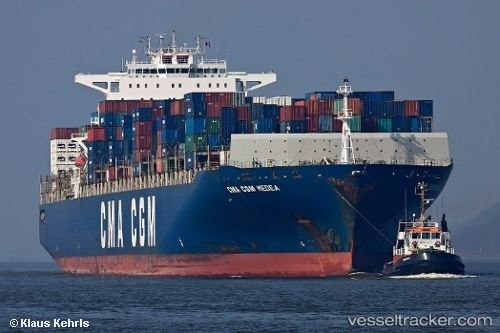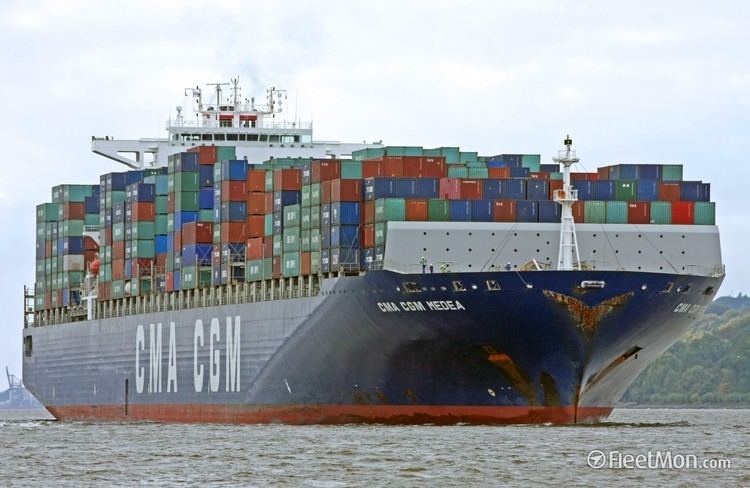Yard number S255 Launched 2006 Draft 14 m Builder Hyundai Samho | Status In service Length 350 m Beam 43 m | |
 | ||
Operator CMA CGM Ship Management Identification ABS class noCall sign FMFRDNV IDIMO number 9299800MMSI no. 635010200 | ||
Ferry ride view container ship x 2 cma cgm medea china shipping line autumn port of oakland
CMA CGM Medea is a container ship built in 2006. Although she is among the largest in the world, she can carry four thousand fewer containers than the largest, Emma Mærsk.
Contents
- Ferry ride view container ship x 2 cma cgm medea china shipping line autumn port of oakland
- Design
- Engine equipment
- Bridge equipment
- References

Ferry ride view container ship x 2 cma cgm medea china shipping line autumn port of oakland
Design

CMA CGM Medea was built in 2006 in the ship-yard of Hyundai Heavy Industries. She is 350 m (1,150 ft) long and has a beam of 43 m (141 ft). The draft, while the ship is fully loaded can reach a maximum of 14.5 m (48 ft). The ship has a deadweight tonnage of 113,909 metric tons and a gross tonnage of 107,711 gross tons. The large size makes the ship more profitable. The net tonnage of CMA CGM Medea is 50,109 net tons. The vessel has a capacity for 9,415 TEU, according to company calculations.
Engine equipment

The main engine installed on board of CMA CGM Medea is Man B&W 12K98MC, which is both reliable and produces high power at low revolutions. This produces a cruising speed of 23.2 knots, with a maximum speed of 25.4 knots. In addition the ship has two bow thrusters with power of 2,500 kW each, for added manoeuvrability in ports.
Bridge equipment

CMA CGM Medea is equipped with modern instruments to allow the plotting of the ship's position. The bridge equipment consists of GPS, dGPS, Automatic Identification System (AIS) and Automatic Radar Plotting Aid (ARPA), which usually allows the position of the ship to be plotted with an accuracy of 100 meters. The Electronic chart system - ECDIS plots the ship's position against charts automatically. The information from the AIS, ARPA and Radar is used to allow the bridge crew to accurately plot the positions of other ships in the vicinity.

